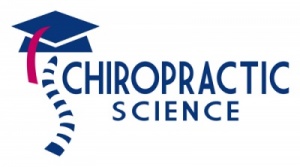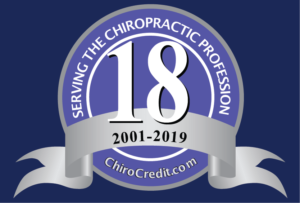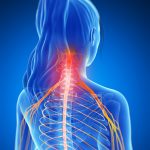Chiropractic and Routine Obstetric Care
 Musculoskeletal pain in pregnant women is common and is frequently viewed as short-lived and temporary. Most women report either low back pain (LBP) or pelvic pain (PP) during pregnancy and up to 40% of patients report pain during the 18 months after delivery. Pelvic pain in pregnant women is a health care challenge in which moderate and severe pain develops rather early and has important implications for society. These pain syndromes increase sick leave and impair general level of function during pregnancy.
Musculoskeletal pain in pregnant women is common and is frequently viewed as short-lived and temporary. Most women report either low back pain (LBP) or pelvic pain (PP) during pregnancy and up to 40% of patients report pain during the 18 months after delivery. Pelvic pain in pregnant women is a health care challenge in which moderate and severe pain develops rather early and has important implications for society. These pain syndromes increase sick leave and impair general level of function during pregnancy.
Previous research has evaluated different treatments to reduce morbidity in women with LBP and/or PP during pregnancy including prescription exercise, manual manipulation, education, acupuncture, and pelvic belts amongst others.
The authors of this study conducted a prospective, randomized, masked clinical trial (including 169 women) to test the hypothesis that a multimodal approach (MOM) involving a chiropractor including manual therapy, exercise, and education for LBP/PP in pregnant women is superior to standard obstetric care (STOB) for reducing pain, impairment, and disability in the antepartum period.
Patients from this study were recruited from 3 university affiliated practices (Washington University, St. Louis, MO). Patients were between 15-45 years old with a single fetus from 24-28 weeks’ gestation. Patients were evaluated by their obstetric provider for LBP, PP or both. Exclusion criteria included acute inflammatory disease, acute infectious disease, chronic back pain for greater than 8 weeks before pregnancy, a mental health disorder, back pain from visceral disease, ongoing treatment for previous back pain, peripheral vascular disease, substance abuse, or litigation pending from back pain.
A single, masked chiropractic specialist conducted the baseline evaluation (BE) with eligible volunteers before randomization. Randomization of subjects across to the STOB group or the STOB plus multimodal musculoskeletal and obstetric treatment (MOM) group was achieved across all 3 sites.
Subjective and objective measures were collected at baseline evaluation (24-28 weeks’ gestation) with follow-up at 33 weeks’ gestation. Three questionnaires including the numerical rating scale, Quebec task force disability questionnaire (QDQ) and personal pain history (PPH) were obtained. Physical assessments included the straight leg raise (SLR), posterior PP provocation test, active SLR, and long dorsal ligament test.
Patients in the both the STOB and MOM groups selected their own obstetric provider. In addition to obstetric care, the MOM group had weekly visits with a chiropractor until 33 weeks’ gestation who provided education, manual therapy, and lower back and pelvic stabilization exercises. Patients were reassured the pain experienced was not likely pathologic and that activation of joints and muscle through exercise would likely improve symptoms and signs without posing risk to the patient or her fetus. Joint mobilization involved gently moving hypomobile joints in their restricted directions to help restore proper range of motion. The gluteus maximus, gluteus medius, quadratus lumborum, abdominal wall, and intrinsic spine muscles were targeted in the quadruped, supine, or side-lying positions.
Key findings of this study were:
- the MOM group (involving chiropractor) had a significant reduction in pain on 7 indices (NRS, QDQ, SLR(left), active SLR, long dorsal ligament test, PPH – leg and shoulders)
- the STOB group had a significant increase in pain on 5 indices and only 1 improvement (PPH -leg)
- The MOM group reported significantly less trouble sleeping at 33 weeks’ gestation than the STOB group
- No adverse events were reported in either group
In summary, including chiropractic interventions with standard obstetric care for low back and pelvic pain in mid pregnancy benefits patients more than standard obstetric care alone. The benefits derived are both subjective and objective. Patients perceived less pain and disability and an overall global improvement in daily activities. Their physical examinations revealed improved range of motion, stability, and less irritation at the lumbar and pelvic joints.
Reference:
George JW, Skaggs CD, Thompson PA, Nelson DM, Gavard JA, Gross GA. A randomized controlled trial comparing a multimodal intervention and standard obstetrics care for low back and pelvic pain in pregnancy. Am J Obstet Gynecol. 2013 Apr;208(4):295.e1-7.









